OK so that third sentence is actually the sum total of my knowledge about Guam. Sorry. Because I was maybe one when he was over there and I really know nothing about it, except that he brought home this sort of Japanese-looking doll from there that I still have somewhere.
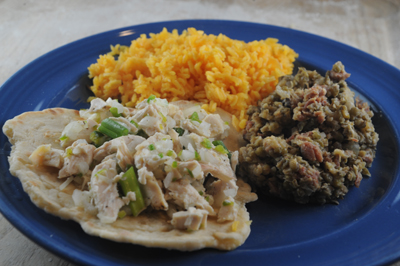 |
So that's the sum total of my dad's knowledge about the food in Guam, which is roughly equal to my own plus one actual meal. Now that was many years ago and I won't say how many because then you'll know how old I am. But he couldn't recall the names of the dishes or anything, so besides being an amusing anecdote my dad's lead was kind of a dead end.
Anyway, in case you know about as little about Guam as I do, here's some background:
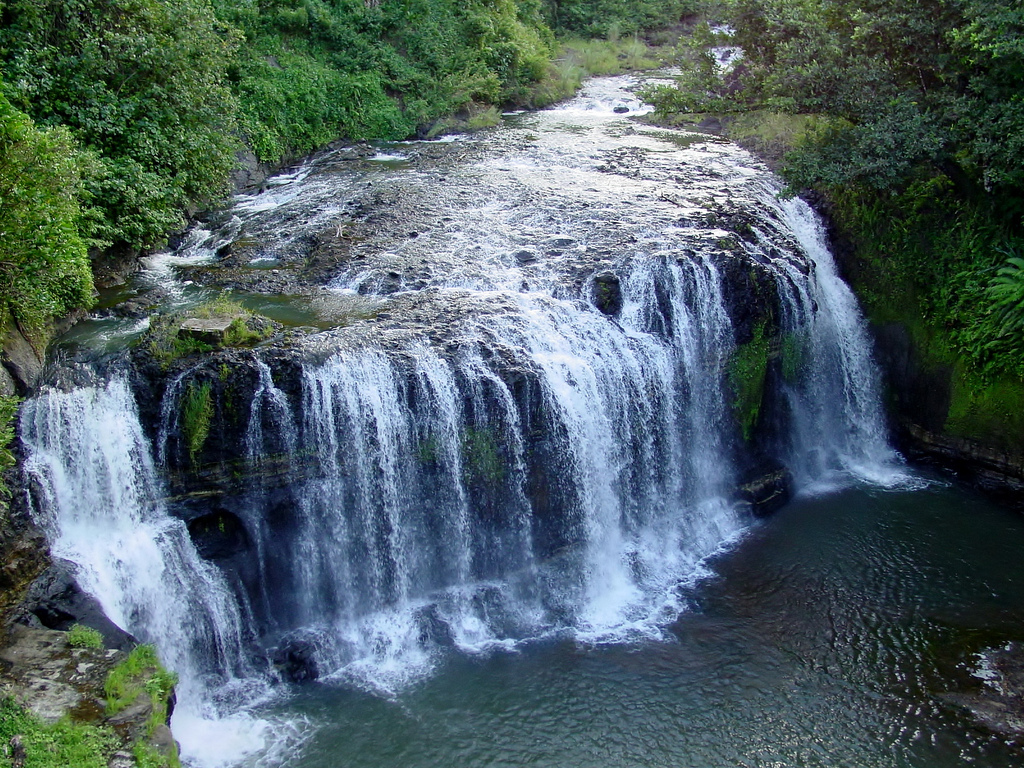 |
| Talofofo Falls, Guam. Photo credit: Douglas Sprott. |
Guam is an unincorporated territory of the United States. It is one of only five US territories that have a civilian government (Puerto Rico is another). And it has, of course, a long history of Europeans trying to settle there and take control over everything. And also the Japanese. In fact, during World War II Guam was captured by the Japanese on the same day as the attack on Pearl Harbor. The Japanese occupied it for two and a half years, during which time the people were subjected to some brutal treatment which I won't describe here because I don't really like to use the word "torture" on my blog, unless I'm talking about shrimp paste or hakarl. Anyway, US troops recaptured Guam in 1944, and today there's still a strong military presence on the island. The military, in fact, is Guam's second largest source of income, just behind tourism.
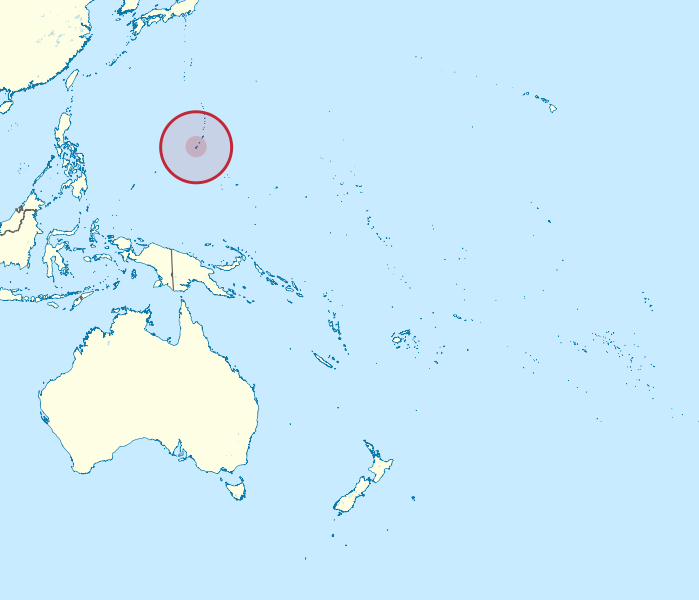 |
Chicken Kelaguen
- 2 grilled chicken breasts
- 1/2 onion
- 3 green onions, sliced on the diagonal
- 1 jalapeño
- Salt and pepper to taste
- Juice of 2 lemons
- Flour tortillas
- 4 cups uncooked rice
- 2 packs Sazon Goya
- 1 onion, chopped
- 1 tsp vegetable oil
- 1 or 2 tsp salt
- 2 to 3 smoked ham hocks
- 1 1/2 cup dried mung beans
- 5 or 6 garlic cloves
- 1 whole onion, quartered
- Salt to taste
- Black pepper to taste
- Garlic powder to taste
- 1 whole onion, diced
- 3 cloves garlic, minced
- 1 tbsp olive oil
- 1 tsp salt
- 1 tsp achiote powder mixed with 1/4 cup water
- 1/2 cup coconut milk
- 3 1/2 to 4 cups of flour
- 1 cup sugar
- 2 tbsp canola oil
- 1/4 cup milk
- 1 1/2 cups coconut water
- 1 to 2 cups coconut meat, sliced thinly into 1-inch pieces
I'm pretty sure you can cook the chicken any way you like, as long as you don't season it. The chicken should take most of its flavor from the lemon juice and the rest of the ingredients in the kelaguen itself. This particular recipe calls for a basic grilled chicken, but the author also says he often just steams his chicken breasts in foil like you would a piece of fish. I just used a rotisserie chicken from Safeway.
So, break the chicken up into bite-sized pieces and then mix in the onions, green onions, jalapeno, salt and pepper and lemon juice. Transfer to the fridge and chill.
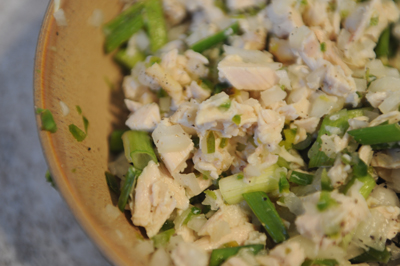 |
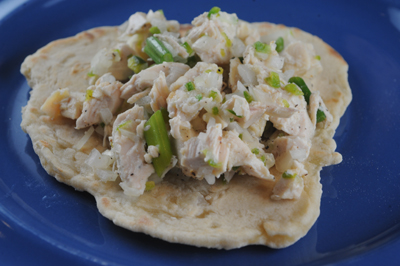 |
Boil the ham hocks with the garlic, onion, black pepper and garlic powder for about three hours. Drain and set aside, reserving the stock. Let cool, then cut the meat up into small pieces.
Meanwhile, boil the mung beans until soft (mung beans cook pretty quickly, in about 45 minutes to an hour).
Now saute the rest of the garlic and onions in olive oil until the onions are translucent. Add the mung beans and salt.
 |
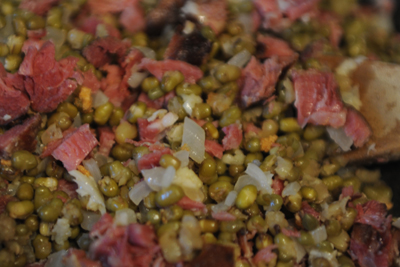 |
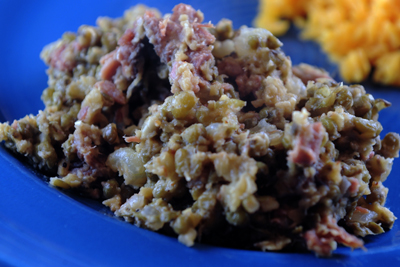 |
Saute the onion in the vegetable oil until translucent. Add the rice, Sazon Goya and water, then bring to a boil.
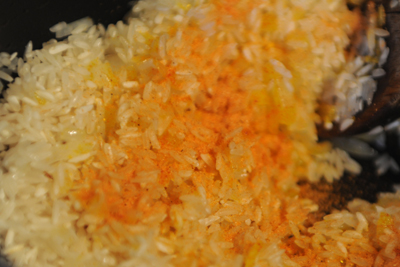 |
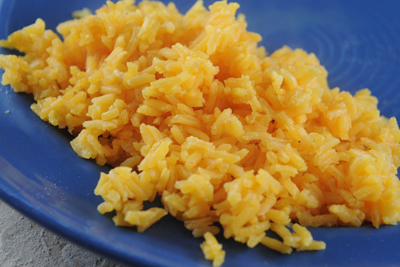 |
Now for the titiyas (which means "tortillas").
I originally made these as a dessert, because I looked at the amount of sugar in the recipe and thought, "dessert." Then as I was making them I decided to do some extra Googling just to be sure, and found several references to them being used with savory dishes. So at the last minute I served them with the kelaguen instead of using the plain flour tortillas I bought for the occasion. Anyway first here's how to make them:
Mix together all of the ingredients except for the coconut meat.
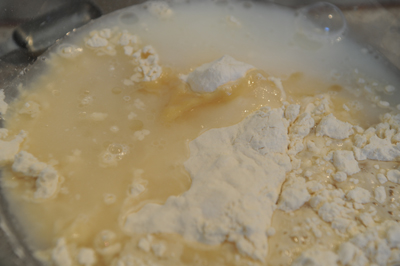 |
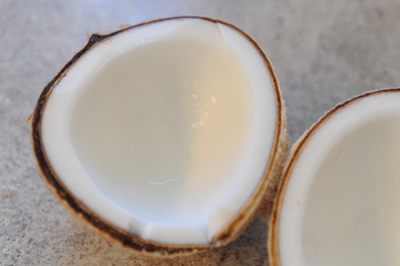 |
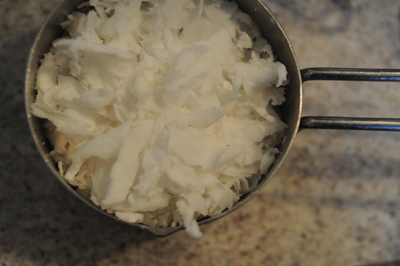 |
Now break the dough apart into six pieces and roll into balls. On a floured surface, roll each ball out until it is about as thick as a tortilla (mine were thicker than they were supposed to be).
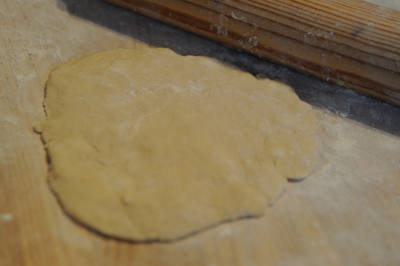 |
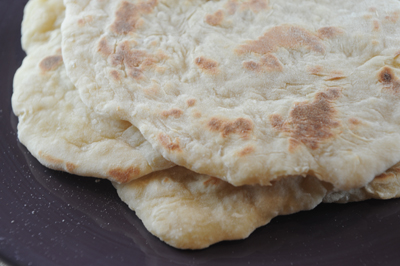 |
Martin loved the kelaguen. In fact he told me I should make it again and we should invite some friends over. I was almost afraid to tell him it was just a rotisserie chicken with some onions and lemon juice.
Actually I think one of the things he liked the best was the manha titiyas, which were sweet but strangely delicious with the kelaguen. Now, someone is bound to post a note on this entry letting me know that eating manha titiyas with kelaguen is wrong, wrong, wrong, but hey, it worked for us and even if it was wrong I would probably do it again. There, I said it.
The beans and ham were nice and different, but a bit stodgy. I'm not sure they were exactly right with the kelaguen, but I did like them.
Oh, and the rice: loved it. I am a huge fan of fluffy rice with a simple flavor, like the sort of thing you get as a side in a Mexican restaurant. This was exactly like that, only with a twist. Nice light flavor and light texture that went perfectly with the other two dishes.
So there you go, not exactly the same experience that Dad had with food in Guam, but very surprisingly delicious and simple. A keeper, for sure.
Next week: Guatemala
For printable versions of this week's recipes:











Yes! the titiyas can be eaten with the keleguen. Back home we would make them just a little thinner and roll them up with it. Almost like a burrito, my uncle would make a ton and we would eat them on our way to school. You can get them at almost any mom and pop store also!
ReplyDeleteI would try eating the ham hock with plain rice next time, traditionally that’s how it would be. Red rice is usually served with bbq meats , fried chicken, etc. most food like kadu, ham hock, things that are very flavorful will be eaten with plain rice.
But thank you for sharing your recipe and for sharing my home it was very comforting!
Thank you for your comment and you are so welcome! I get so much of my info from these little websites and it's hard for me to tell what's authentic and what's not, so it's always great to hear from people who actually live/d in these places.
ReplyDelete